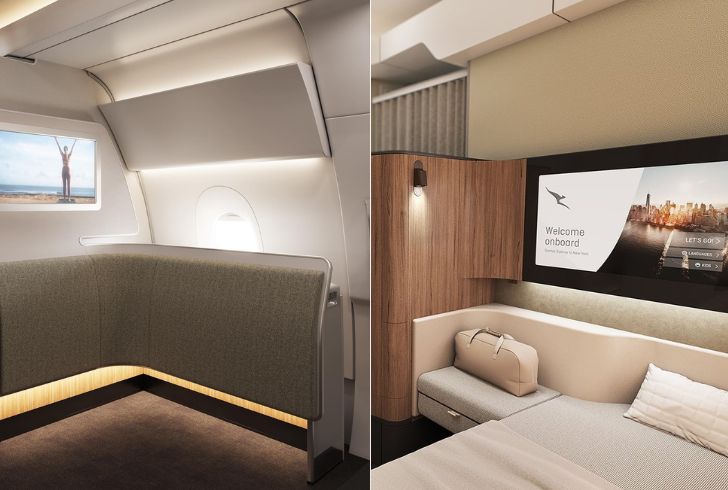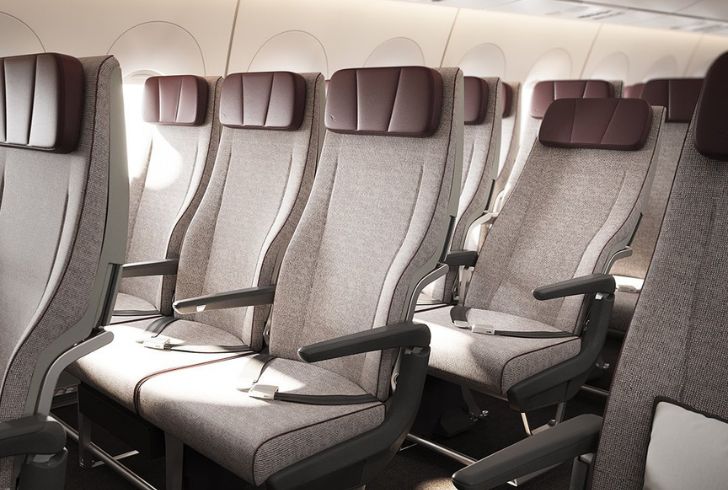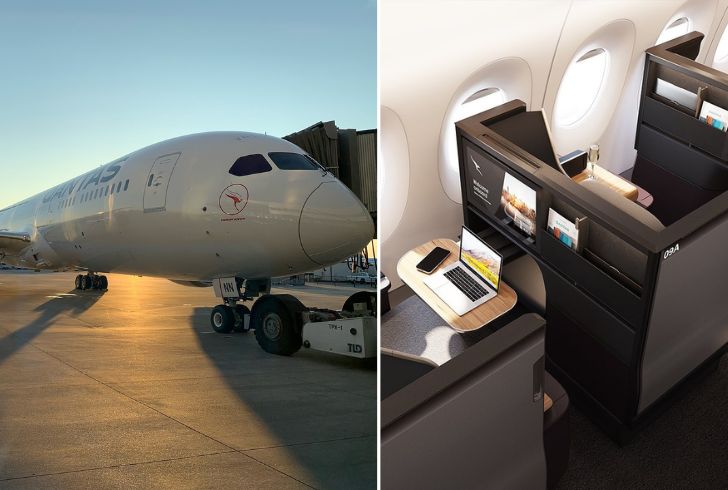Embracing the Skies: Qantas Takes Flight on Ultra-Long-Haul Routes
In a clear sign of optimism for the rebound of international travel, Qantas is leading the charge by reintroducing ultra-long-haul flights. The airline recently inaugurated a service between New York and Sydney, featuring a stop in Auckland, New Zealand, a departure from its previous layover in Los Angeles.
However, the real focus for Qantas is on nonstop flights between Sydney and the global hubs of New York and London, with flight durations potentially stretching to around 20 hours—a cinematic timeframe allowing passengers to binge-watch most of the Star Wars Skywalker Saga.
Streamlining Travel: Nonstop Connections from Sydney

Instagram | Ultra-Long-Haul Flight Route Map: Sydney to New York.
Qantas CEO Alan Joyce highlighted the convenience of nonstop flights, stating, “You don’t have to take your bags off, you don’t have to transfer, you don’t have a chance of misconnecting.” This move is expected to reduce travel time by over three hours compared to flights with layovers in other airports.
Innovative Approaches to Combat Jet Lag
Qantas has invested eight years in collaboration with sleep scientists, exploring passenger moods, sleep patterns, and food intake to mitigate the impact of jet lag on super-long flights. Test runs in 2019 revealed that delaying meal service and extending passengers’ wakefulness with cabin lights contribute significantly to combating jet lag upon arrival.
The Aircraft of the Future: Airbus A350-1000
To bring these ambitious plans to fruition, Qantas plans to deploy ultra-long-range Airbus A350-1000 planes starting in late 2025. These specialized aircraft will accommodate 238 passengers—considerably fewer than the standard version’s 350-plus capacity. The reduction aims to provide more spacious seating, accounting for both weight considerations and the plane’s extended range.
- Qantas has placed orders for 12 of these bespoke planes.
- The emphasis on fewer passengers ensures a more comfortable travel experience.
Elevated In-Flight Experience

Instagram | Qantas Airbus A350-1000 in Flight.
The Airbus A350-1000 planes will boast six enclosed first-class suites, featuring a table for two, a reclining chair, a 32-inch touch-screen television, and a 2-meter flatbed. Additionally, the aircraft will offer 52 business-class suites with lie-flat beds, 40 premium economy seats, and 140 economy class seats. Qantas plans to introduce a “Wellbeing Zone” equipped with handles for stretching, on-screen exercise guides, and complimentary Wi-Fi.
Navigating Challenges: Beyond Technical Feasibility
While advancements in engine efficiency and aircraft technology make ultra-long-haul flights technically feasible, they present economic challenges. According to Robert Mann, an airline industry analyst and former executive, “There’s technical feasibility, and then there’s economic feasibility.” Qantas’ bold move reflects confidence in the airline’s ability to overcome these challenges and cater to a niche market.
Lessons from Singapore Airlines
Singapore Airlines, a pioneer in ultra-long-haul flights, faced its own set of challenges. Despite launching a nonstop flight from Newark to Singapore in 2004, the carrier discontinued it in 2013 due to the retirement of fuel-guzzling four-engine aircraft. However, it successfully relaunched the route in 2018, making headlines with the world’s longest flight from New York’s JFK International Airport to Singapore in November 2020.
Navigating the Skies Ahead

Instagram | Qantas Ultra-Long-Haul Cabin Interior with First-Class Suites.
Qantas CEO Alan Joyce remains optimistic, stating that the airline’s international capacity is back to 85% of pre-pandemic levels, with expectations of full recovery by March. As the aviation industry charts new territories with ultra-long-haul flights, Qantas is not just connecting destinations but also redefining the in-flight experience for the modern traveler. The future of air travel is unfolding, and Qantas is at the forefront, breaking barriers one nonstop flight at a time.